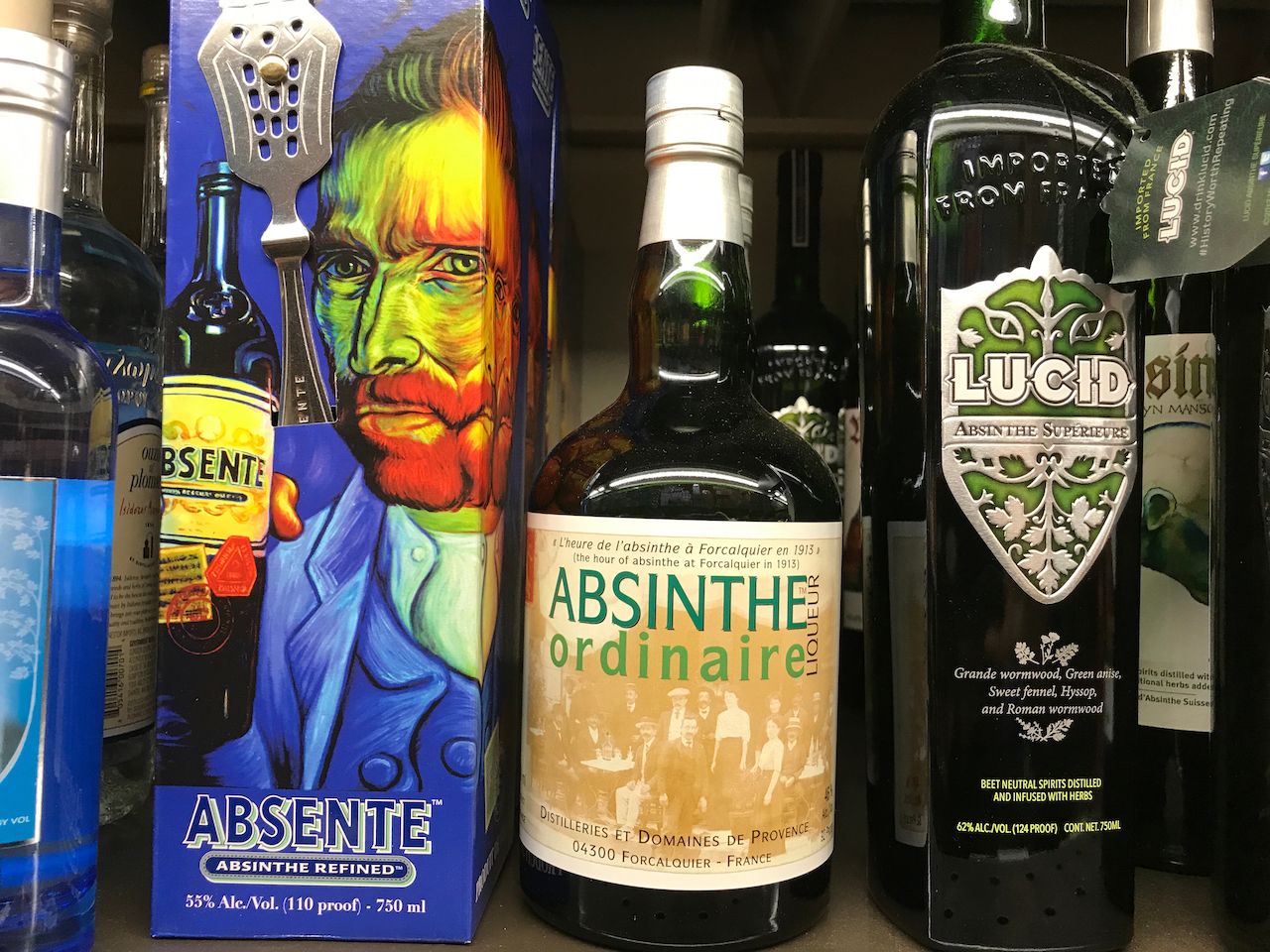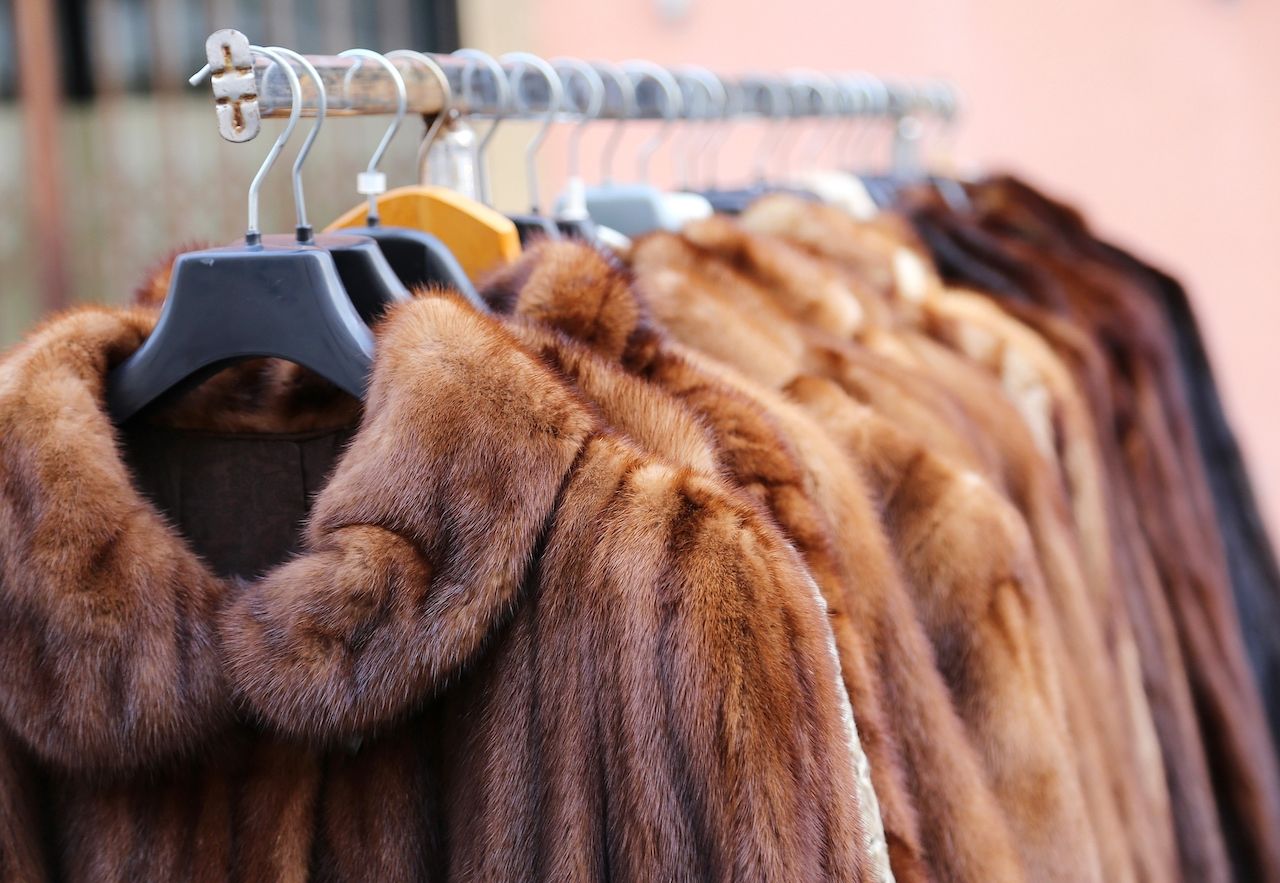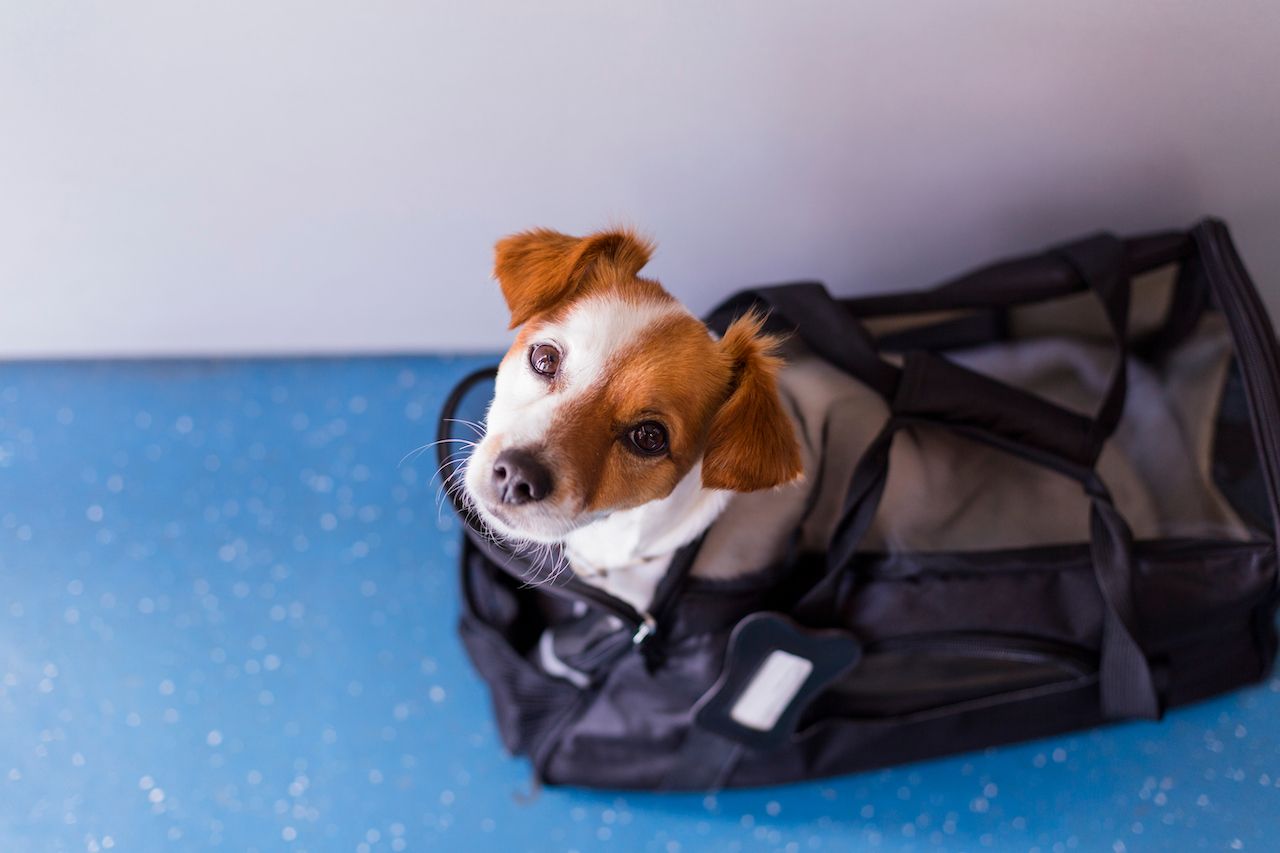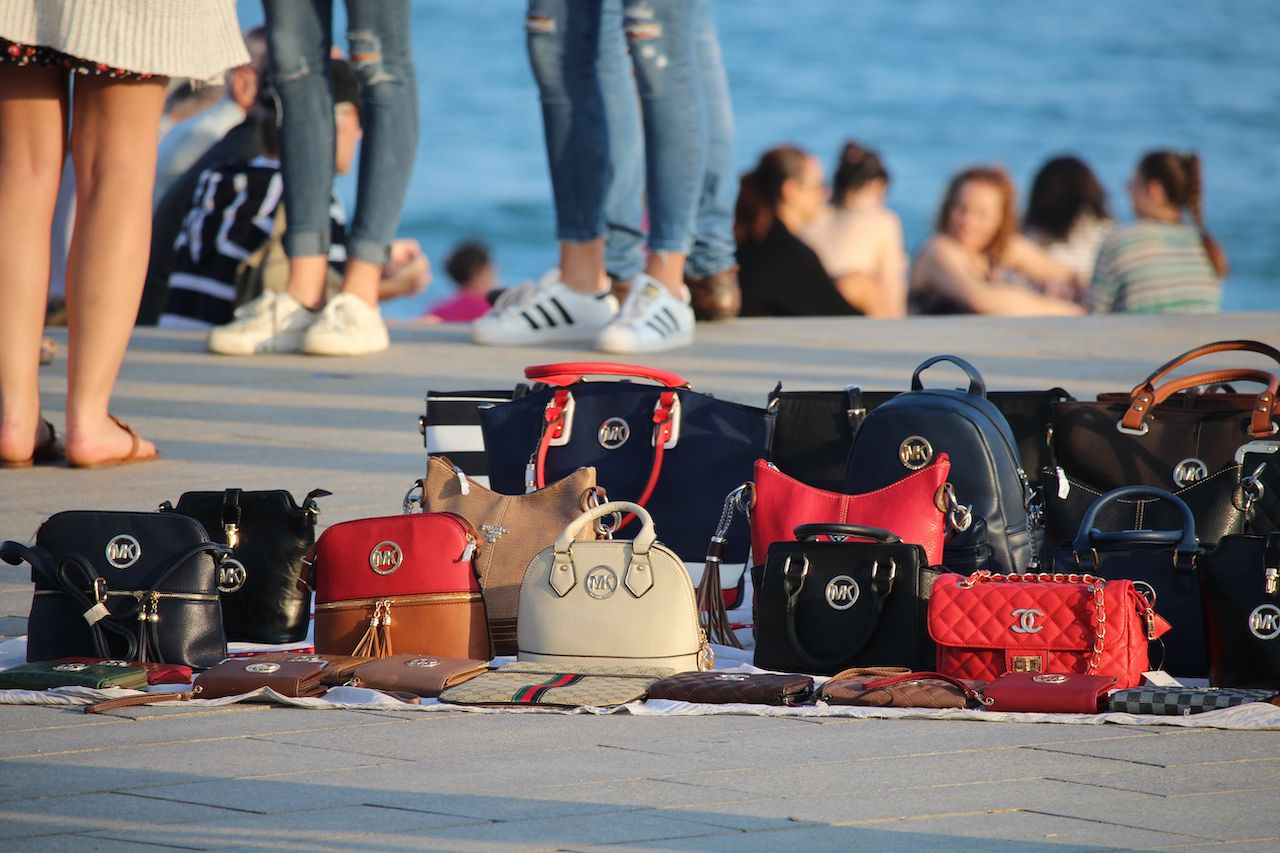Horror stories of travelers getting their expensive Italian cheese confiscated at the border and tales of people getting blacklisted and fined for bringing fruit into the United States have us all sweating nervously through customs. To avoid having to defend yourself for a tomato sandwich or a funny-looking Louis Vuitton handbag, make sure everything in your luggage, including souvenirs, adheres to the (sometimes surprising) US border policies. Here are 10 items travelers often wonder if they can take back with them, and whether or not they’ll make it past customs.

10 Things You Can and Can’t Take Through the US Border
1. Cultural artifacts: No

Photo: Aleksandar Todorovic/Shutterstock
Most countries have laws protecting their cultural property in an effort to preserve their unique heritage. Cultural property can be anything from art to antiquities to archaeological artifacts. Imports that US law currently prohibits includes pre-Colombian art from Central or South America, Native American property from Canada, terracotta sculptures from Mali, and Cambodian Khmer stone artifacts. Customs and Border Protection (CBP) encourages contacting them for a full list of prohibited items.
However, even with a permit from the country of origin, the specific laws are murky. To avoid confiscation and a hefty fine, leave any original cultural artifacts behind.
2. Absinthe: Technically, yes

Photo: Jeff Bukowski/Shutterstock
You probably already know that bringing alcohol into the US is legal under a certain limit; however, there are exceptions to this rule.
Absinthe, a highly alcoholic beverage distilled with wormwood and anise, originated in Switzerland, and has a long history of prohibition in the US. Fabled to be the alcohol that inspired the art of Pablo Picasso and Vincent van Gogh, there’s a great deal of mystique surrounding the beverage.
However, stories of absinthe acting as a psychoactive hallucinogen are largely false. In reality, absinthe, although much more potent than your typical German beer, is just another alcohol.
Despite absinthe being legalized in 2007, that doesn’t necessarily mean that you can bring a bottle back in your luggage. Any absinthe you bring back must be “thujone-free” — in other words, it must contain less than 10 parts per million of thujone, the chemical component in wormwood that was once thought to be responsible for hallucinations. “Absinthe” cannot be the brand name or written anywhere on the label. Artwork on the bottle cannot suggest any hallucinogenic or mind-altering effects.
So, the verdict — technically, yes, you can bring absinthe into the US, but you have to be positive it adheres to the specific rules surrounding it.
3. Dog and cat fur: No

Photo: ChiccoDodiFC/Shutterstock
Since 2000, it is fully illegal to import, export, distribute, transport, or manufacture products containing dog or cat fur in the US. You will also be fined up to $10,000, depending on whether your violation was intended or by mistake.
Even if the idea of ever wearing a dog fur coat sends a shiver down your spine, still beware. Some countries that do participate in the dog and cat fur trade — such as China — have been found intentionally mislabelling products in order to bypass the US’ ban. Investigations by the Humane Society and other organizations have discovered dog and cat fur labelled as mink or fox fur — and also under more ambiguous names such as or “Asiatic raccoon” or “coyote.” If you find yourself suspicious of an article of clothing purchased abroad, the only way to be sure you’re not participating in this industry is to stick to faux fur altogether.
4. Fruits and veggies: Depends

Photo: Alexander Raths/Shutterstock
Whether or not you’ll be able to bring home that airport banana is dependent on what country you are coming from and where you intend to go after you arrive in the US. CBP is such a stickler because fresh fruits and vegetables can introduce plant pests or diseases into the US. The same goes for live plants and plant seeds.
The Mediterranean fruit fly outbreak of the 1980s was due to importation of contaminated Mediterranean tomatoes. The invasive species cost the state of California $100 million to eliminate the problem. To avoid outbreaks like this in the future, all fruits and vegetables entering the US must be declared and inspected. Don’t be surprised if border control asks you to toss that apple you were thinking of snacking on during the ride home — just ask the Delta passenger who was fined $500 for an apple given to her during her flight by the airline staff.
5. Live animals: Depends on species and circumstances

Photo: eva_blanco/Shutterstock
Another huge gray area, the transportation of live animals — pets or not — is subject to a long list of dependencies.
Pets, except for pet birds, that are returning home are subject to the same procedures and restrictions as animals entering the US for the first time. This process could include quarantines, vaccinations, and even prohibition. Pet birds returning to the US are subject to different restrictions dependent on whether they are of US or foreign origin.
The Centers for Disease Control requires that all dogs and cats are healthy and vaccinated against rabies. Bats, civets, African rodents, and non-human primates may not be transported as pets under any circumstances. CBP gives a lengthy list of rules — including some seemingly unusual ones, such as a restriction on the “importation of turtles with a shell length of less than 4 inches” — which can be found on its website. Additional laws apply to certain US territories, such as Guam and Hawaii.
Whether you’re taking your pet on vacation or for permanent relocation, it is best to give CBP a call to avoid any complications.
6. Drug paraphernalia: No

Photo: content_creator/Shutterstock
Whether you intend to use it for its intended purpose or just as a keepsake, it is illegal to bring drug paraphernalia into the US unless prescribed for an authentic medical condition. Drug paraphernalia — anything that is used to make, use, or conceal drugs — will be confiscated. This includes everything from marijuana vaporizers to hollowed-out books meant to hide illicit substances. In certain circumstances, you could face heavy fines or even arrest.
The one exception to this rule: Tobacco pipes are allowed in your luggage or carry-on.
7. Medicine: Yes

Photo: BigKhem/Shutterstock
The restriction on drugs and drug paraphernalia may cause you concern if you need to bring medicine on your vacation.
Medicine prescribed for a medical condition is completely legal to transport through the US. border. You should not bring more than a 90-day supply, and all medicine should be transported in the original container with the doctor’s prescription written on the label. If you move the medicine to another container, make sure you bring along a signed doctor’s note.
In addition, any medication entering the US from a foreign country must be accompanied by a doctor’s note.
8. Counterfeit brand clothes: No

Photo: Dino Geromella/Shutterstock
Although finding a pair of Kanye West’s Yeezys for $60 instead of the usual $350 may be tempting, know that bringing counterfeit consumer goods back into the US is illegal. Articles with fake trademark symbols — most commonly footwear, clothing, and leather goods — are subject to confiscation.
However, travelers arriving in the US are granted one, exception to this law, given that the counterfeit item is for personal use, not resale, and that it was an honest mistake. The difficulties comes when you need to prove you had no clue what you purchased was a fake.
A 2019 report by the Organization for Economic Cooperation and Development revealed that the largest producers of these counterfeit consumer goods are currently China and Hong Kong, with Singapore and the United Arab Emirates as additional major distribution points. If you’re traveling to any of these places and intend to go shopping, keep a sharp eye out.
9. Gold: Yes

Photo: pixfly/Shutterstock
Gold coins, medals, and jewelry may be brought into the US. But just like most everything else, there are exceptions.
According to the Office of Foreign Assets Control, gold originating in Cuba, Iran, Myanmar, and most of Sudan are prohibited entry due to export regulations placed by those countries. In addition, copies of gold coins are prohibited if not properly marked by the country of issuance as fakes.
10. Meat, livestock, and poultry: Mostly no

Photo: Africa Studio/Shutterstock
Like fruits and vegetables, the regulations governing meat and meat products are strict. You may not import meat or meat products from most foreign countries into the US. This includes dried and canned meat, too. Eat that French saucisson before you make it back home.
The regulations on importing meat and meat products change frequently because they are based on disease outbreaks in different areas of the world including rubella, salmonella, and ebola. For example, you probably won’t run into any trouble bringing back harðfiskur from Iceland, but African bushmeat is currently prohibited. Check out the US Department of Agriculture’s website for specifics on animal disease status.